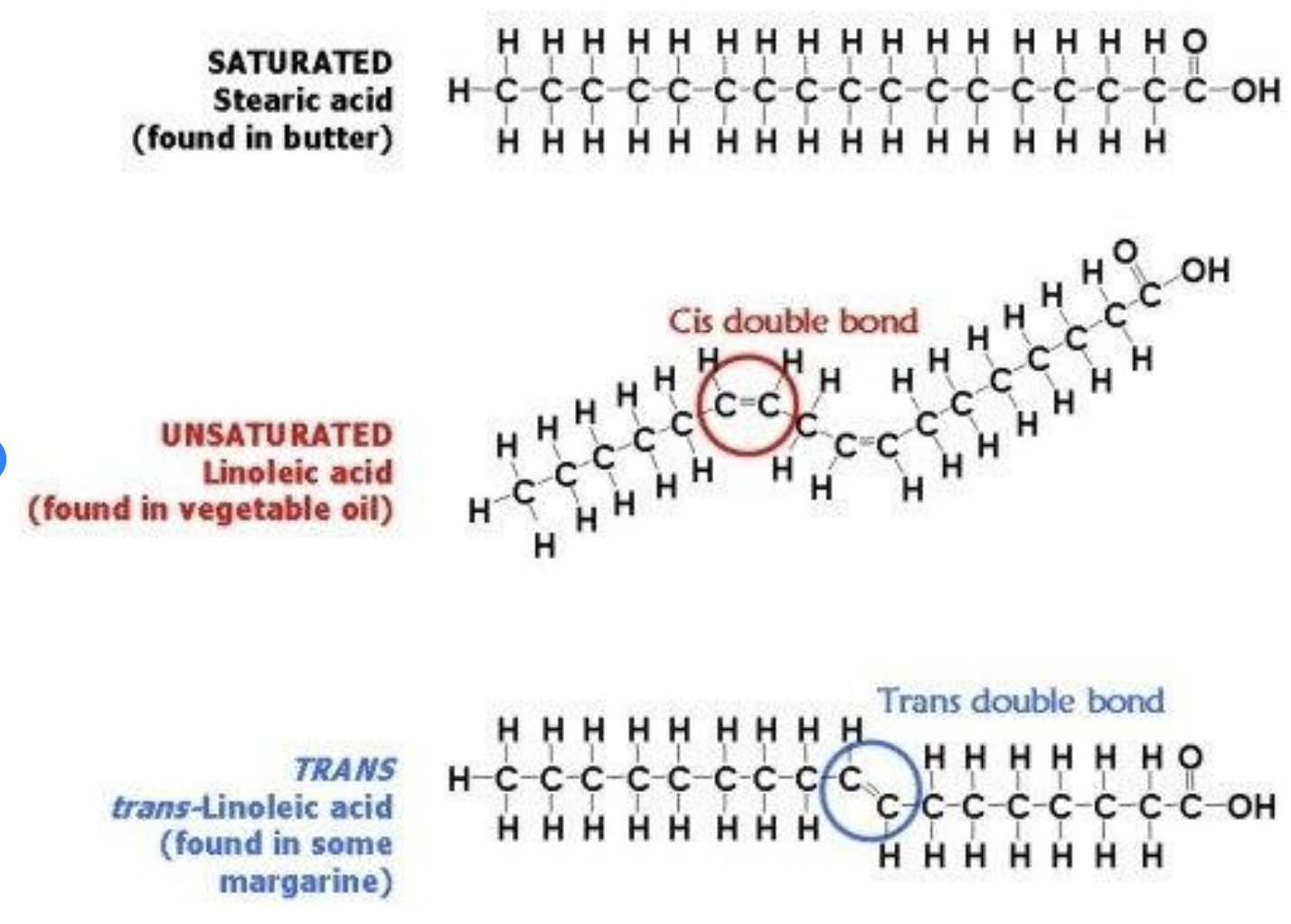Fats are a bit of a conundrum for most people. Are they good or bad? What should we avoid? Or include? There is no need to be afraid of fat. it’s just a necessary part of our diet. As with everything, the key is education and moderation.
The word “Fat” has previously been an unkind descriptor for people, and vilifed by media/marketing into a fearful food. Unloading the F-word, I’ll instead refer to dietary “lipids”. In the blood they travel as acids, known as “fatty acids”. Body fat can be more accurately defined as “adipose tissue”.
So what are lipids and why do we need them? Hold on to your hats, we have to do some organic chemistry (relax, you’ll be fine). Organic Chemistry means the chemistry involved with living growing systems - mostly Carbon, Hydrogen, Oxygen, and Nitrogen. An aside: Inorganic Chemistry is chemistry of the inanimate; rocks and minerals, manufacturing of plastics - things that don’t grow on their own.
Lipids are macromolecules made of long chains of carbons strung together with hydrogen atoms sticking out on either side. Imagine a carbon centipede with lots of hydrogen legs. When we eat lipids, the high-energy carbon strings are sequentially broken, giving us energy to move, repair, and generally live our lives. Not only energy sources, lipids are structural and surround every cell of our body as part of the cell membrane. Fatty acids are important for nerve conduction in both the core and peripheral nervous system, and did you know that our brain is made up of 60% fat?
Hopefully after reading all of this, you realize that fats are important components of our diet and bodies, and we simply need to approach them in a calm educated manner.
Saturated/Unsaturated Fat: These are dietary buzzwords, but do you know what they really mean? Have a look at this image. It’s a saturated (left) vs unsaturated (right) lipid - they both exist in nature and our body knows how to digest them.
Think of a sponge saturated with water - It can’t possibly hold any more. Saturation of lipids refers to the number of hydrogens attached to the molecule. If each carbon in the chain has as every possible landing site occupied by hydrogen, it is called “saturated”. These types of lipids mostly come from animal products (exception; fish). Butter, lard, full-fat dairy, tallow, and meat are examples.
Saturated fats are long and straight. They stack together well and protect each other from oxidation (rancidity). This is why saturated fats are so solid and stable at room temperature. Neither butter nor lard need to be refrigerated to stay solid, nor do they go rancid easily at (North America) room temperature.
But if not every landing site on a lipid carbon backbone is occupied by hydrogen and there is space for more, it is unsaturated. Because an unsaturated lipid chain is kinked, they don’t stack straight and solid against each other and so are liquid at room temperature. If there is only one kink in the chain, its a mono-unsaturated fat. If there are more kinks, it’s a poly-unsaturated fat. Unsaturated fats mostly come from plant products, for example olive oil and other vegetable oils, nuts and seeds. Cold-water oily fish also contain many unsaturated fats that are very beneficial to us. (More on these Essential Fatty Acids here.)
There is one last part of the saturation puzzle: Trans Fats.
Trans Fats are created by food processing and capitalism. Vegetable oils (unsaturated) are cheaper to produce than animal fats (saturated), but are less shelf-stable. In order to sell more cheap vegetable oil (palm oil mostly), a way to stabilize them at room temperature had to be found. Enter a chemical process called “hydrogenation” which showers the unsaturated oil with hydrogen to produce a saturated shelf-stable solid. Well OK, points for ingenuity and economy, but this process adds the hydrogen to the opposite side of the carbon chain when compared to the natural version of a saturated fatty acid (see image to the right). Why should we care? Because our body is not familiar with this form of lipid, and the break-down products of trans-fats attack our tissues, notably our cardiovascular system . Denmark banned trans-fats from their food stream back in 2004. The US finally did the same in 2018.
So what’s the takeaway on how to approach dietary fats? Guidelines from the Mayo Clinic and other science-based sources:
#1 Trans-fats. AVOID. They are just not good for you. This includes anything that says “partially-hydrogenated…” on the ingredients label. Pretty much anything in cellophane with a long expiration date, or found at a gas station. And why margarine is still a thing is beyond me. Easy hack: Eat real food - if you avoid processed foods, this problem is eliminated.
#2 Saturated fats. Eat less - aim for 10% of your caloric intake or less. Though our body knows how to handle them, these lipids give us more energy than we probably need, and are associated with higher blood levels of LDL cholesterol. Interesting point: If saturated fat in the diet is replaced with unsaturated fats, risk for heart disease decreases. If saturated fat in the diet is replaced with refined carbohydrates, risk for heart disease increases. Easy hack: choose fewer dietary animal fat sources per day - replace them with plant fats, NOT refined sugar.
#3 Unsaturated fats (both mono and poly-unsaturated fats) are healthier choices. Eat more. Vegetable oils such as olive, sunflower, safflower, and nuts and seeds like peanut, walnut, pine nuts, pumpkin and sesame seeds etc, as well as fatty fish which contain Essential Fatty Acids (EFAs in the next blog) like omega-3s (salmon, herring and sardines.) should all feature in your diet. These fats are associated with lower LDL and improved cardiac outcome. Easy hack: You can generally identify unsaturated fats as liquid at room temperature.
#4 Quantity. All fats are high in calories (9-10 cal/g, an m+m is about a gram of fat). Manage the amount of fat in your diet to about 25-30% of your intake. In a 2000-calorie diet, than means 44 - 77 g of fat. (44 m+m’s? Think about it - that’s not much if you have a sedentary lifestyle). Easy hack: ensure the fats you choose to include are more in the unsaturated (liquid) category. Increase quantity only if you’re burning a lot of energy per day.



